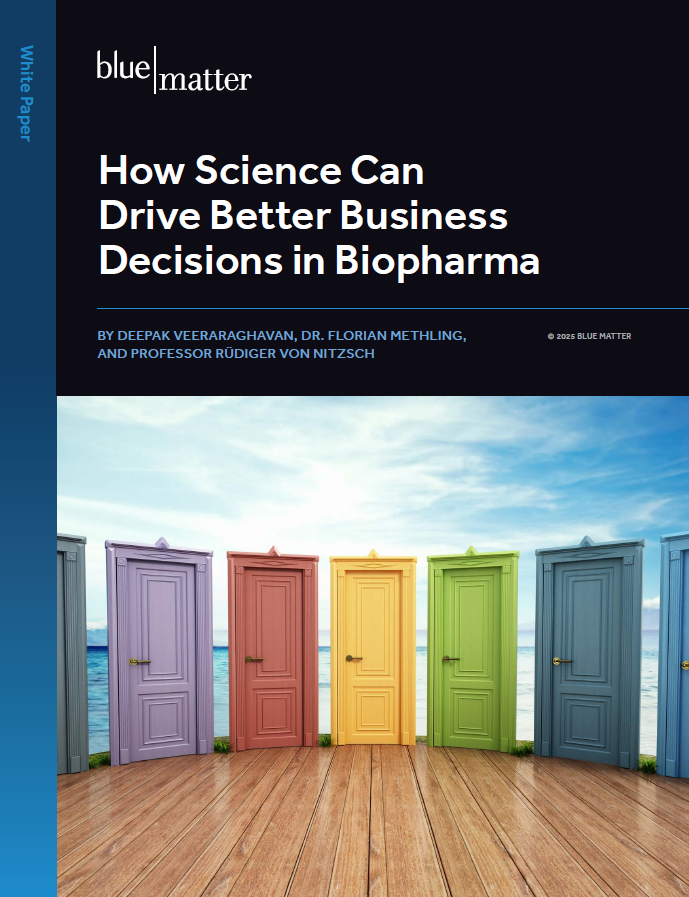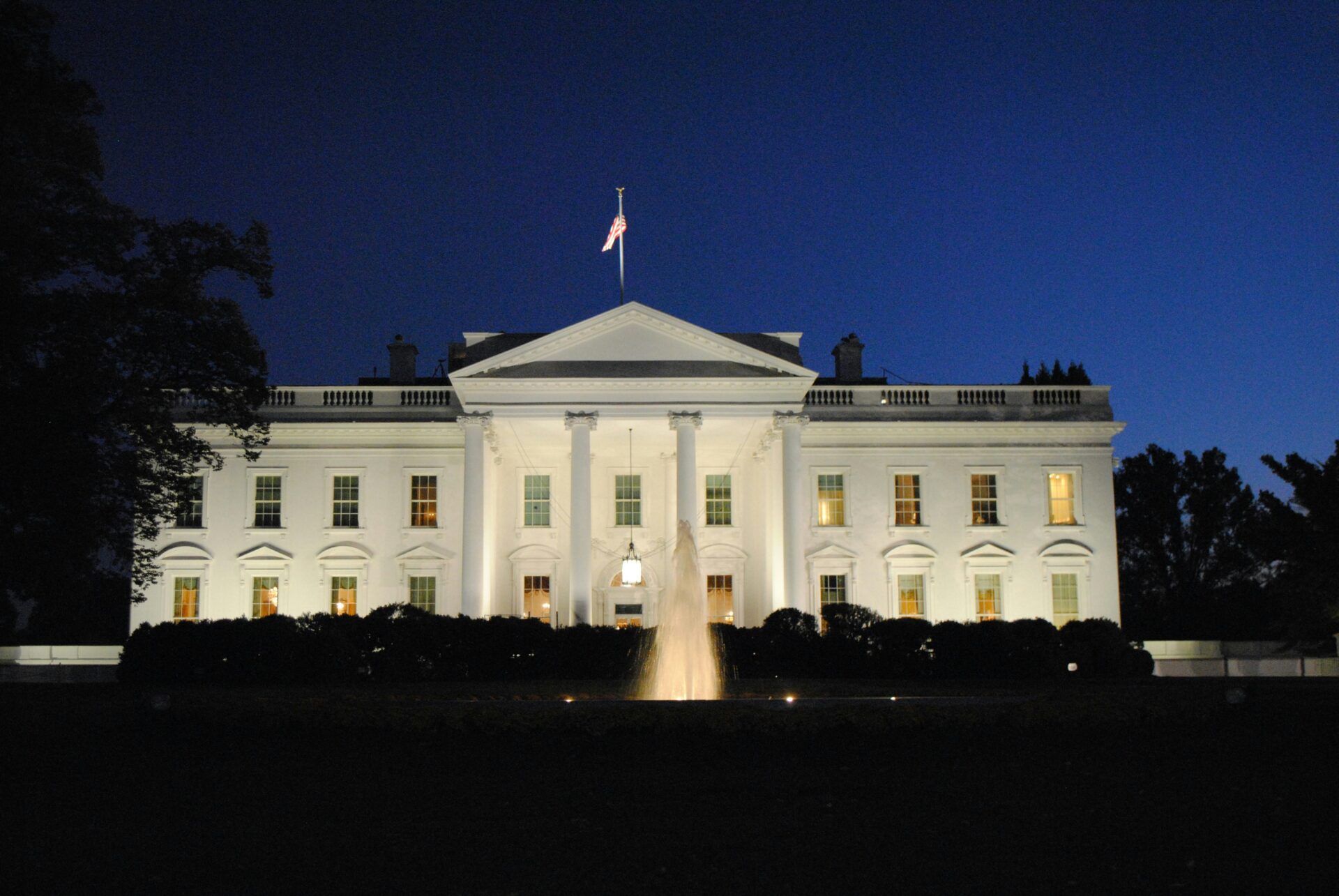In our previous paper, we discussed several trends shaping the European market access landscape. Here, we explore recent cross border collaborations in more detail. While the recent COVID response highlighted many challenges, payers are making (slow) progress on a range of ongoing or planned initiatives:
- Small groups of countries conducting joint healthcare technology assessment (HTA) and price negotiations
- Increased official or unofficial price referencing
- EU-wide initiatives e.g., HTA harmonization, evidence generation requirements, real world evidence (RWE)
From the biopharma industry’s perspective, these initiatives could deliver streamlined consultation, submission and negotiation, and increase capacity for RWE collection. However, biopharma companies could also face greater pricing pressure as countries share information and boost their negotiating power.
In this paper, we outline some cross-border initiatives of interest, their progress to date, their likely future impact, and potential implications for biopharma.
| Name | Geography | Scope / Focus Areas | Potential impact on Biopharma product strategy (next 1 - 3 years) | Impact Rating |
|---|---|---|---|---|
| Active, Ongoing Initiatives | ||||
| EUnetHTA | EU | HTA harmonization | EU-wide impact, but limited change from current state anticipated | Medium |
| Beneluxa | Belgium, Luxembourg, Netherlands, Austria, and Ireland | Price negotiation and horizon scanning. HTA in development | Proof-of-concept; potential to expand to other countries; provides a public benchmark on price discount/payment terms | High |
| Nordic Pharmaceutical Forum and FiNoSE | Nordics (Denmark, Sweden, Norway, Finland and Iceland) | Tenders, HTA. Price negotiation in development | High feasibility but limited geography | Medium |
| Baltic Partnership Agreement | Estonia, Latvia and Lithuania | Joint procurement, currently focused on vaccines | Limited scope / geography | Low |
| Initiatives in Development | ||||
| EU Regulation on HTA | EU | Joint HTA assessment for drugs submitted for a central marketing authorization | High potential impact, but the final regulation (if approved) will likely allow member states substantial flexibility, and reduce the likelihood of a fully aligned approach across states | Medium |
| EC Pharmaceutical Strategy | EU | Information exchange, pricing, cost-effectiveness, payment, procurement | High potential impact but many hurdles and long implementation timelines | Medium |
| EMA Strategy | EU | Evidence generation | Moderate feasibility and EU-wide impact but limited to evidence generation | Medium |
| Additional Initiatives to Watch | ||||
| Visegrád Group | Poland, the Czech Republic, Hungary, Slovakia (the V4) and Lithuania | Information exchange, price negotiations, HTA | Limited geography | Low |
| Valletta Declaration | Cyprus, Greece, Italy, Malta, Portugal, Spain, Croatia, Ireland, Romania, and Slovenia | Horizon scanning, information sharing (focused on price transparency), price negotiation and HTA | Affects 30% of EU population if implemented; potentially significant impact on pricing | Medium |
| IHSI | Netherlands, Belgium, Ireland, Denmark, Luxembourg, Norway, Portugal, Sweden and Switzerland | Information on medicines and horizon scanning | Limited scope | Low |
| RWE4Decisions | EU | RWE collection, RWE to inform decision making | High feasibility, impact on RWE | Medium |
| Unofficial Price Referencing | ||||
| Referencing HE Models from Other Countries | All | Benchmark for price negotiations | Easy to adopt and impactful for price negotiations | High |
Active, Ongoing Initiatives
There are numerous ongoing initiatives in Europe, covering a range of access topics from cooperation on pricing to HTA standardization. The scope of these initiatives also varies, from EU-wide to small groups of countries voluntarily coming together.
EUnetHTA[1]
About: An EU-wide initiative, EUnetHTA was set up in 2006 to “connect public national HTA agencies, research institutions and health ministries, enabling an effective exchange of information and support for policy decisions by Member States”. Basically, its goal is to develop harmonized HTA processes. It has also been active in providing early consultations to pharma companies on their clinical programs as well as joint relative efficacy assessments of medical products, developing these assessments with countries who opt in.
Recent news: EUnetHTA is currently in its 3rd and final joint action[2], Joint Action 3 (JA3). JA3 aims to build on EUnetHTA’s work to date and “ultimately develop and disseminate [a] Europe-wide actionable product, in the form of Joint Assessments in both Pharmaceuticals and Other Technologies”[3]. JA3 includes a plan for facilitating national implementation to help make the joint assessments usable in a real-world setting[4].
What’s next?: EUnetHTA was due to finish its mandate in 2020 with no official announcement yet on future plans. It is possible that joint early consultations to provide clinical development advice will continue. However, joint assessments of medical products are likely to remain advisory and limited in scope.[5]
The Beneluxa Initiative[6]
About: Launched in 2015 by Belgium, Luxembourg and the Netherlands, the Beneluxa Initiative now includes Austria and Ireland, with interest from other parties[7]. The initiative has instigated a number of joint actions. These include a successful joint price negotiation for Spinraza in 2018 and establishment of a joint horizon scanning initiative.
Recent news: In May 2020, the Beneluxa Initiative announced that Belgium, Ireland and the Netherlands will undertake a joint HTA assessment of Zolgensma[8]. In May 2021, the joint assessment was finally published, with Zorginstituut Nederland (ZIN) publicly recommending a “pay-for-performance” agreement and 50% price-cut. ZIN also recommended a joint price negotiation with Belgium and Ireland[9].
What’s next?: Beneluxa has demonstrated success in joint price and HTA negotiations, and further joint assessments on three more gene therapies have been planned. While the pilots have been lengthy, future assessments are likely to increase in speed as the joint methodology is established.
Success of the Beneluxa initiative could attract other countries to participate. It has already reached out to other international initiatives, such as the Nordic Pharmaceutical Forum, for collaboration.[10] Their joint statement outlines initial aim in examining 1) cost-effectiveness in the assessment of medicines 2) robust clinical evidence for decision makers in a timely manner.
Publication of the evaluation outcomes, as well as public statements on price discounts, pay-for-performance, and payment terms also provide an easily available benchmark for other countries to reference for their own negotiations.
The Nordic Pharmaceutical Forum[11],[12] and FiNoSe[13]
About: The Nordic Pharmaceutical Forum was set up in 2015, with the aim of expanding the purchasing power of the smaller nordic countries, including joint procurement[14]. FiNoSe was set up in 2018 to pilot joint evaluation of innovative therapies, with an aligned HTA approach and evidence requirements.
Recent news: In 2019 the first joint tender for certain hospital products took place through the Nordic Pharmaceutical Forum, with the agreements coming into effect in 2020[15]. In 2019 FiNoSe conducted its first joint health economic assessment (of Zynteglo®) which they plan to follow with a joint price negotiation[16].
What’s next?: The Nordic Pharmaceutical Forum and FiNoSe have worked on their first joint tendering and HTA assessments. Future joint tenders are being considered, and the Forum is planning to take lessons learned from their first tender forward[17].
The Baltic Partnership Agreement
About: In 2012 Estonia, Latvia and Lithuania set up the Baltic Partnership Agreement for joint procurement of medicines and medical devices[18]. Their current focus is on vaccines[19].
Recent news: In 2017, the first successful joint tender took place between Estonia and Latvia, to purchase the rotavirus vaccine. In 2018, Latvia and Lithuania jointly purchased pneumococcal vaccines[20].
What’s next?: The Baltic procurement initiative has achieved success with some joint procurements. The frequency and scope of future joint actions will be interesting to watch.
Initiatives in Development
The European Commission (EC), European Medicines Agency (EMA), and Heads of Medicines Agencies (HMA) published strategies in 2020 that aim to promote and facilitate EU-wide cooperation. The EC is also still in the process of negotiating an EU-wide regulation on HTA.
EU Regulation on HTA
The EU regulation on HTA is a recent example of lengthy negotiations within the EU. Proposed by the EC in 2018 (see our European market access landscape paper), this legislation would require joint clinical assessment for drugs submitted for a central marketing authorisation[21]. However, it has taken three years for the proposal to move into negotiations between the European Parliament and Council. The original regulation has also been adapted to increase flexibility for member states and reduce its ability to ensure a common approach[22]. Moreover, even if agreement is reached, the requirements would only be phased in over an eight-year period, with cancer therapies the first to be slated for joint assessments.
EC Pharmaceutical Strategy for Europe[23]
As part of this strategy, the EC proposes EU-level cooperation on pricing and reimbursement, with “payers to exchange information on sustainable health systems, pricing, cost-effectiveness, payment, procurement policies and affordability−including of cancer treatment.”[24] The strategy also supports a pan-European HTA, through the EU regulation on HTA. The strategy has been adopted by the EC and includes plans for legislative and non-legislative action.
European Medicines Agencies Network Strategy to 2025[25]
Part of this strategy indicates the intention of the European medicines agencies to support further collaboration with and between HTAs across Europe, as well as information sharing and transparency across borders in general. Strategic goals include working with HTA bodies and payers on evidence generation, including pre-planning of post-licencing evidence generation. The strategy also indicates that the EU regulation on HTA would support the strategic objectives of the EMA and HMA.
While these strategies and regulation could result in major changes for the pharma industry, they will likely take many years to implement and need to overcome significant hurdles.
Additional Initiatives to Watch
Beyond the initiatives described above, there are many other cross-border collaborations related to market access. We describe a few examples below.
The Visegrád Group – “Fair and Affordable Pricing” FaAP[26]
About: Set up in 2016/2017, FaAP now includes Poland, the Czech Republic, Hungary, Slovakia (the V4), and Lithuania. FaAP plans to focus on the exchange of information on pricing and reimbursement, joint price negotiations, and joint HTA assessments (specifically of high-cost treatments)[27].
Recent news: The Ministers of Health for each country signed a memorandum of understanding in 2017, and then again in 2019 following expiration of the first memorandum.
What’s next?: FaAP is looking to set up pilot negotiations[28], but does not appear to have initiated any yet.
The Valletta Declaration[29]
About: Initiated in 2017, the Valletta Declaration has now been joined by 10 European countries, primarily in the south and east (Cyprus, Greece, Italy, Malta, Portugal, Spain, Croatia, Ireland, Romania, and Slovenia), making up over 30% of the EU population[30]. The group is interested in horizon scanning, sharing information on pricing, joint negotiations and joint HTA assessments.
Recent news: The group has identified target treatments for joint negotiations. However, it has not yet performed any joint assessments or negotiations[31].
What’s next?: It remains to be seen how successful the collaboration will be, though it has taken a strong stance on price transparency and is looking for ways to achieve this across borders.
International Horizon Scanning Initiative (IHSI)[32]
About: Initiated by the Beneluxa initiative in 2019, IHSI aims to develop a database that brings together publicly available information on medicines to provide member states (Netherlands, Belgium, Ireland, Denmark, Luxembourg, Norway, Portugal, Sweden and Switzerland), payers, and regulators insights on upcoming treatments that will support their decision making.
Recent news: The IHSI began the tender process to find a third-party to build their database in early 2020. Selection of a partner is expected in Q2 2021, with the first datasets available in early 2022[33].
What’s next?: The impact of the database and whether member states will make use of it remains to be seen.
RWE4Decisions[34]
About: Initiated by the Belgian National Institute of Health and Disability Insurance in 2020, RWE4Decisions brings together European policy-makers, HTA bodies, payers, regulatory agencies, patient groups, academics, clinicians, and industry to “agree what real-world data (RWD) can be collected for highly innovative technologies – when, by whom and how – in order to generate real-world evidence (RWE) that informs decisions by healthcare systems, clinicians and patients”.
What’s next?: RWE4Decisions is aiming to drive policy changes at the European and national levels. We will explore RWE and potential implications for biopharma in a future article.
Unofficial Price Referencing
Referencing HE Models from Other Countries
About: Health Economics models, especially those published by leading HTA agencies (e.g., NICE), provide a benchmark for other countries to calibrate their own price expectations. Payers in France and Germany for example, have both reported leveraging NICE models during price negotiations with biopharma.
Recent news: Publication of the Zolgensma evaluation by the Beneluxa initiative and public statements by ZIN on price expectations now provide additional benchmarks for smaller EU countries interested in a benchmark closer to their own health system and budget needs.
What’s next?: While “official” initiatives take significant time and effort to progress, adoption of unofficial price referencing faces few barriers to implementation. With the increasing number of ATMPs coming to market, we expect payers to increasingly leverage these methods to manage budgets.
Implications for the Biopharma Industry
Cross-border changes in Europe could bring both benefits and challenges for biopharma companies, from increased price transparency that impacts negotiations to joint HTA assessments that could streamline processes and alter evidence requirements. While some changes, especially those at a EU-wide level, will take a long time to implement, other initiatives (e.g., Beneluxa) are demonstrating early success and establishing a precedent for other countries interested in joining or following.
Publication of joint evaluation results—and public statements on price discounts and payment requirements—are likely to support other countries in their price negotiations, regardless of whether they participate directly in a cross-border collaboration.
Below, we provide a short outline of potential implications for biopharma companies.
- Small groups of countries conducting joint HTA and price negotiations: Biopharma companies should
- Prepare for the need to provide greater support (e.g., access / health economics expertise, local data generation) from global or regional offices.
- Enable knowledge and best practice sharing among affiliates engaging or likely to engage with cross-border initiatives (e.g., learn from the Beneluxa experiences to date and consider what internal adaptations are needed).
- Increased official or unofficial price referencing: Biopharma companies should
- Monitor for the need to adjust launch sequencing.
- Conduct scenario planning and establish contingency plans for IRP
- Develop a proactive plan for managed entry agreements that speaks to the value of the product (we will explore this topic in more detail in a later publication).
- EU-wide initiatives e.g., HTA harmonization, evidence generation requirements:
- While changes are longer-term and likely to be phased in, policy-level engagement via industry bodies such as the EFPIA are important to ensure a two-way dialogue and that biopharma concerns are heard.
- Working to establish standards for—and improve the quality of—individual types of evidence (e.g., RWE) should also facilitate the eventual adoption of broader HTA alignment.
Overall, per evidence requirements and price- or budget-impact sensitivity are both evolving. Proactively incorporating payer evidence needs from the start, developing access solutions early, and leveraging the cross-functional team’s expertise to address access challenges are critical to the success of products and portfolios. In future articles, we will continue to explore these challenges and opportunities, and what Market Access functions can do to maximize value for patients, payers and biopharma companies.
| EC | European Commission |
| EMA | European Medicines Agency |
| FaAP | Fair and Affordable Pricing |
| HMA | Heads of Medicines Agencies |
| HTA | Health Technology Assessment |
| IHSI | International Horizon Scanning Initiative |
| RWD | Real World Data |
| RWE | Real World Evidence |
End Notes:
[1] https://www.eunethta.eu/eunethta-project-2006-2008/
[2] https://www.efpia.eu/media/361736/cra-efpia-learnings-from-the-first-three-eunethta-joint-action-3-assessments-final-report.pdf
[3] https://eunethta.foleon.com/eunethta-winter-2021/winter-2021/eunethta-overview/
[4] https://eunethta.eu/ja3-archive/work-package-7-national-implementation-and-impact/
[5] Kanavos, P., Angelis, A. & Drummond, M. An EU-wide approach to HTA: An irrelevant development or an opportunity not to be missed?. Eur J Health Econ 20, 329–332 (2019). https://doi.org/10.1007/s10198-019-01037-2
[6] https://beneluxa.org/collaboration
[7] https://pharmaboardroom.com/articles/cross-country-collaborations-in-europe-the-future-of-pricing-access-negotiations/
[8] https://beneluxa.org/news3
[9]https://www.zorginstituutnederland.nl/actueel/nieuws/2021/05/07/medicijn-zolgensma-voor-zeldzame-spierziekte-sma-alleen-in-basispakket-na-prijsonderhandeling
[10] https://amgros.dk/media/3160/statement-beneluxa-og-nordisk-laegemiddelforum.pdf
[11] https://amgros.dk/en/about-amgros/cooperation-partners/international-cooperation/
[12] https://www.infarmed.pt/documents/15786/2835945/Flemming%2bSonne%2b_Abs.pdf/522ce638-2712-46db-ac4e-5a01549610f7
[13] https://www.tlv.se/in-english/international-collaboration/finose—a-nordic-cooperation.html
[14] https://pharmaboardroom.com/articles/cross-country-collaborations-in-europe-the-future-of-pricing-access-negotiations/
[15] https://amgros.dk/en/knowledge-and-analyses/articles/all-the-agreements-in-the-first-joint-nordic-tendering-procedure-are-in-place/
[16] https://pharmaboardroom.com/articles/cross-country-collaborations-in-europe-the-future-of-pricing-access-negotiations/
[17] https://amgros.dk/en/knowledge-and-analyses/articles/all-the-agreements-in-the-first-joint-nordic-tendering-procedure-are-in-place/
[18] “How can voluntary cross-border collaboration in public procurement improve access to health technologies in Europe?” Policy Brief, No. 21. Espín J, Rovira J, Calleja Aet al., European Observatory on Health Systems and Policies; 2016. https://www.ncbi.nlm.nih.gov/books/NBK464528/
[19] https://amgros.dk/en/knowledge-and-analyses/articles/all-the-agreements-in-the-first-joint-nordic-tendering-procedure-are-in-place/
[20] https://www.baltictimes.com/latvia_to_purchase_vaccines_jointly_with_baltic_neighbors/
[21] https://eur-lex.europa.eu/legal-content/EN/TXT/?uri=CELEX%3A52018PC0051
[22] https://www.efpia.eu/news-events/the-efpia-view/statements-press-releases/efpia-statement-in-response-to-the-council-compromise-agreement-on-the-commission-proposal-for-a-regulation-on-health-technology-assessment/
[23] https://ec.europa.eu/commission/presscorner/detail/en/ip_20_2173
[24] https://ec.europa.eu/health/human-use/strategy/affordable_medicines_en
[25] https://www.ema.europa.eu/en/documents/report/european-union-medicines-agencies-network-strategy-2025-protecting-public-health-time-rapid-change_en.pdf#page=17&zoom=100,0,0
[26] https://www.gov.pl/web/zdrowie/faap
[27] Cross-country collaborations to improve access to medicines and vaccines in the WHO European Region. Copenhagen: WHO; 2020 (https://www.euro.who.int/en/publications/abstracts/cross-country-collaborations-to-improve-access-to-medicines-and-vaccines-in-the-who-european-region-2020)
[28] Cross-country collaborations to improve access to medicines and vaccines in the WHO European Region. Copenhagen: WHO; 2020 (https://www.euro.who.int/en/publications/abstracts/cross-country-collaborations-to-improve-access-to-medicines-and-vaccines-in-the-who-european-region-2020)
[29] https://timesofmalta.com/articles/view/10-eu-countries-fighting-for-better-deals-on-medicine-prices.721318
[30] Cross-country collaborations to improve access to medicines and vaccines in the WHO European Region. Copenhagen: WHO; 2020 (https://www.euro.who.int/en/publications/abstracts/cross-country-collaborations-to-improve-access-to-medicines-and-vaccines-in-the-who-european-region-2020)
[31] https://pharmaboardroom.com/articles/cross-country-collaborations-in-europe-the-future-of-pricing-access-negotiations/
[32] https://ihsi-health.org/mission/









